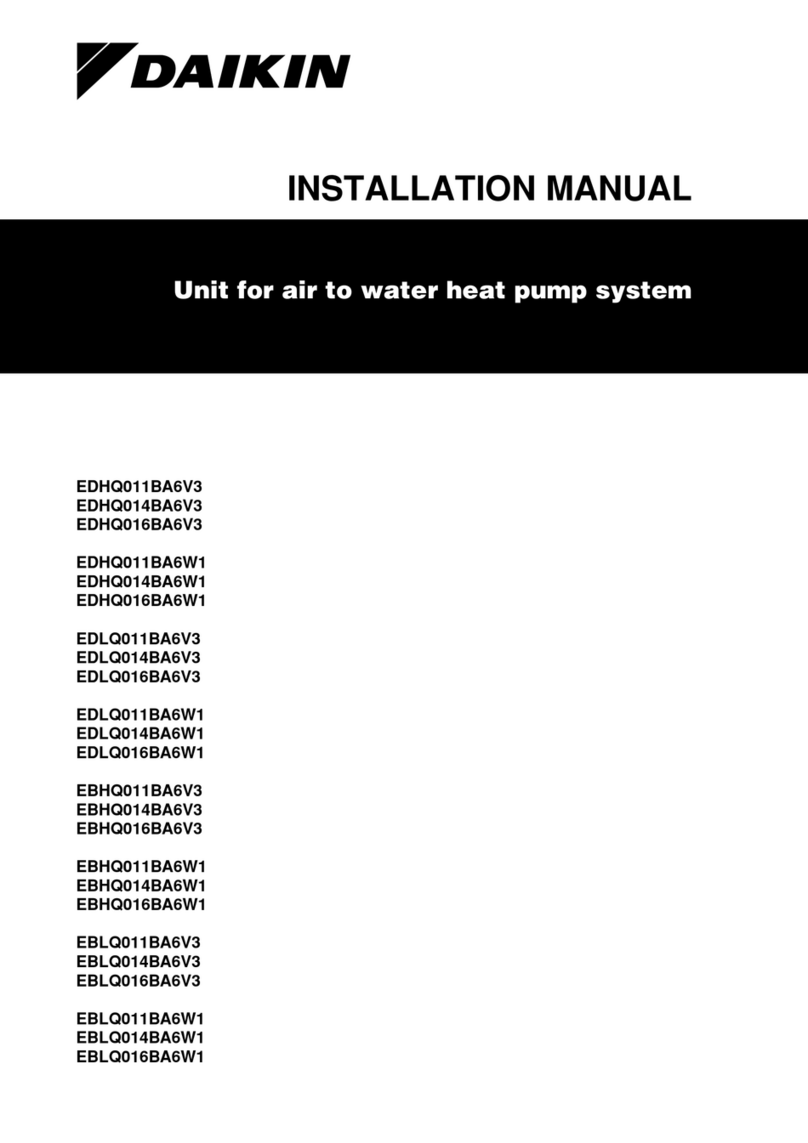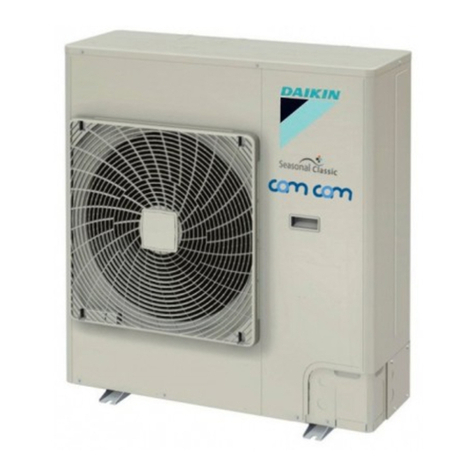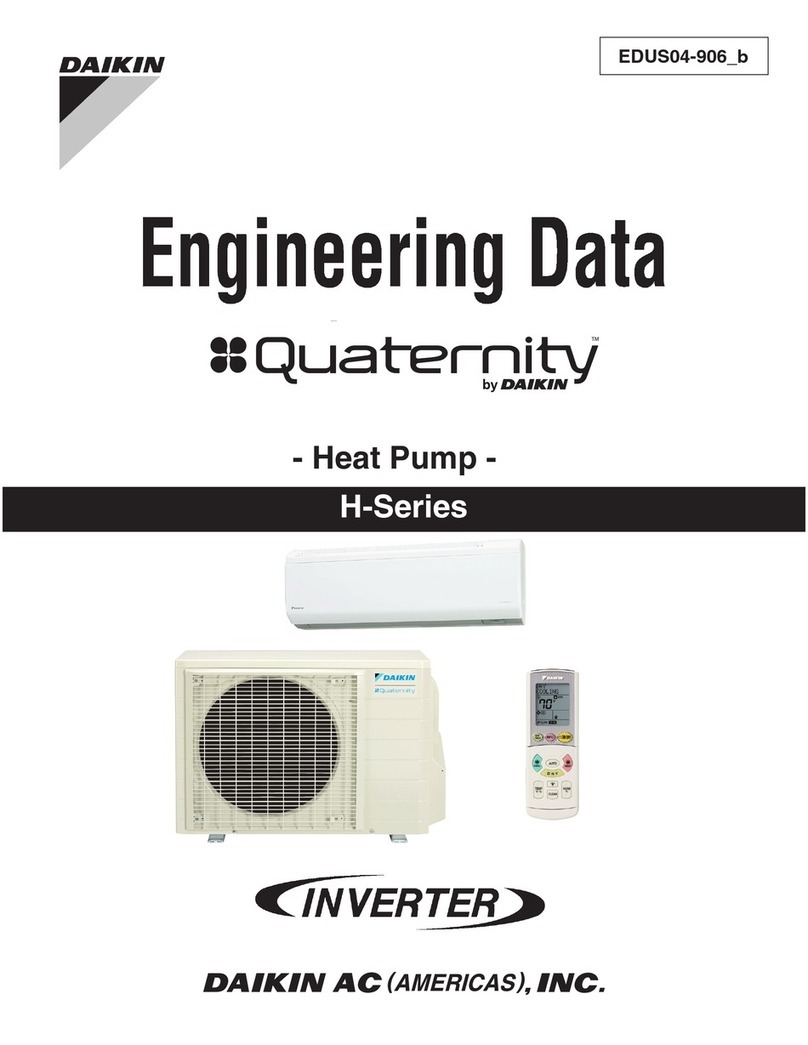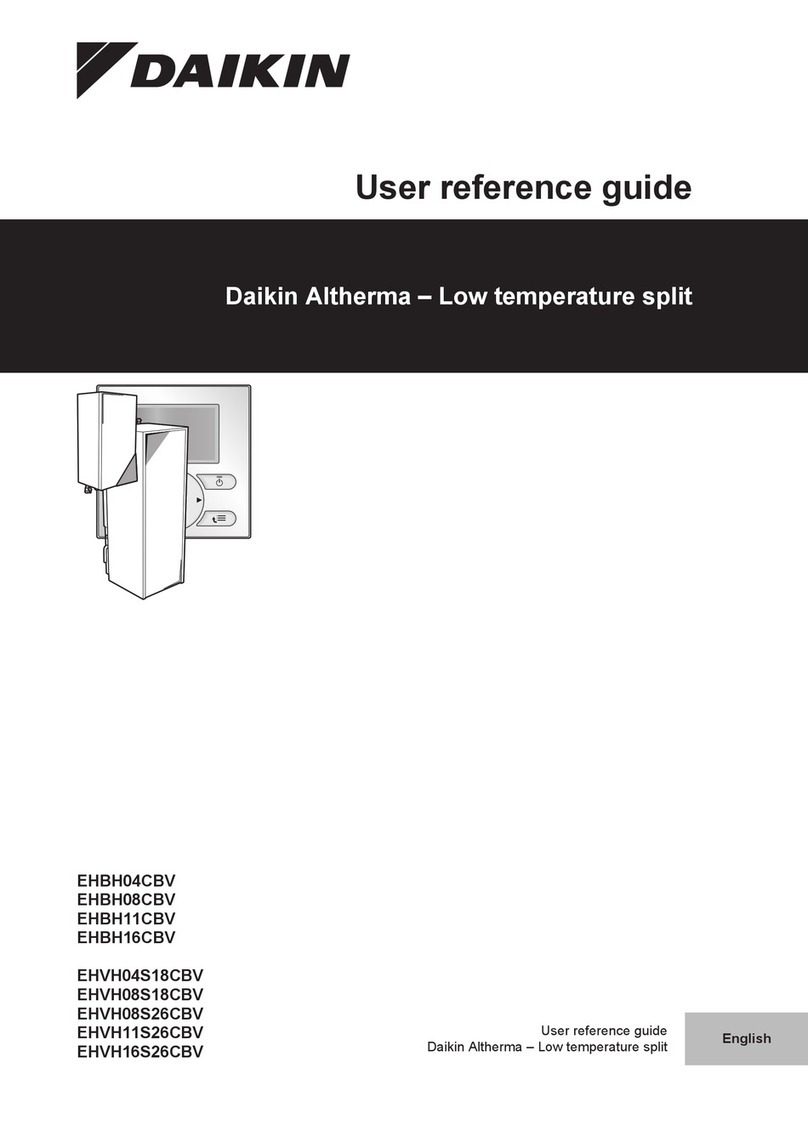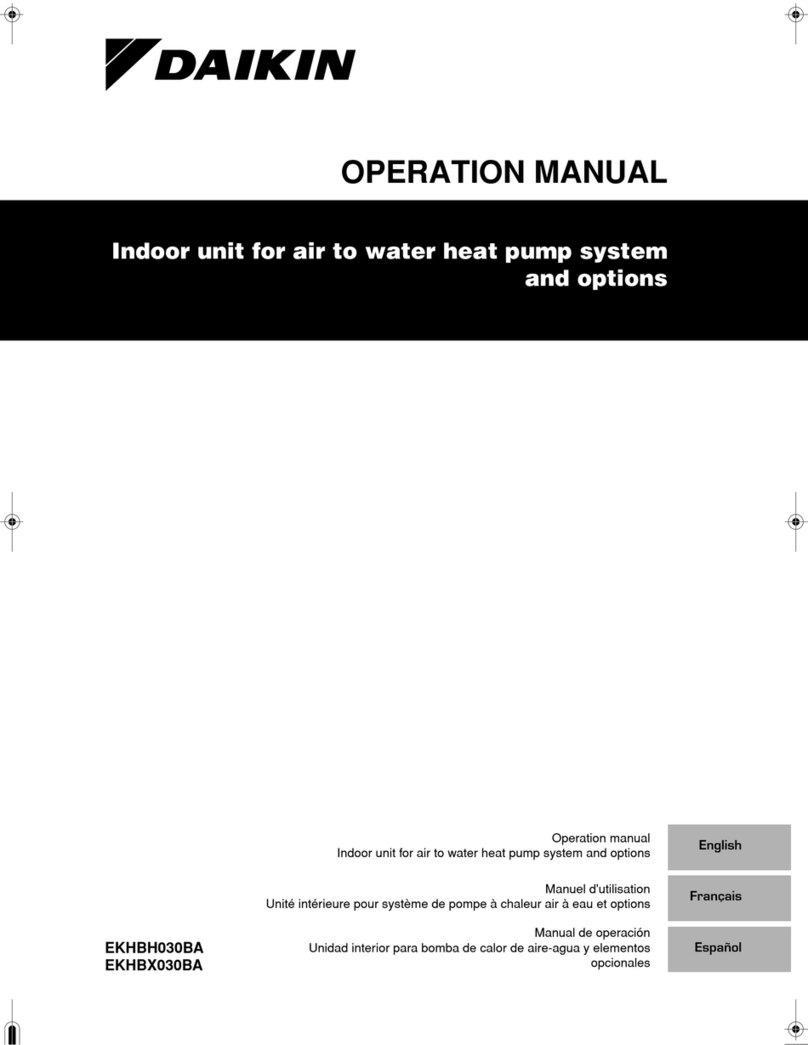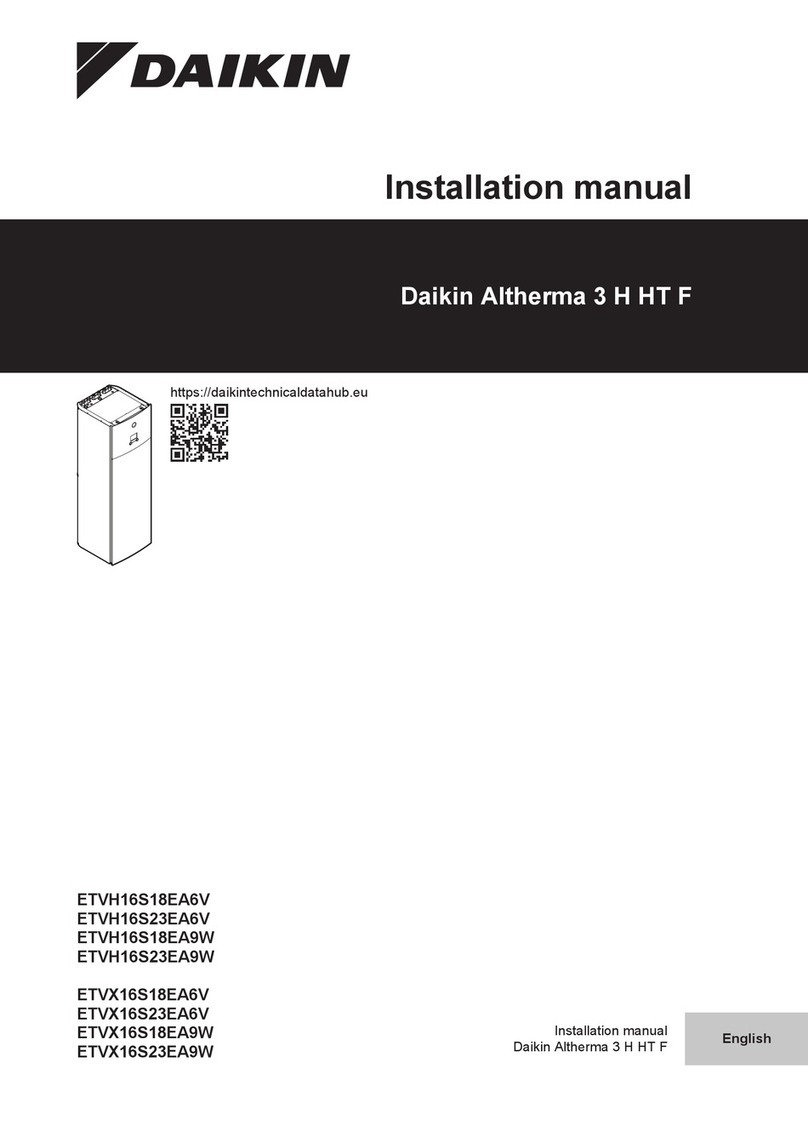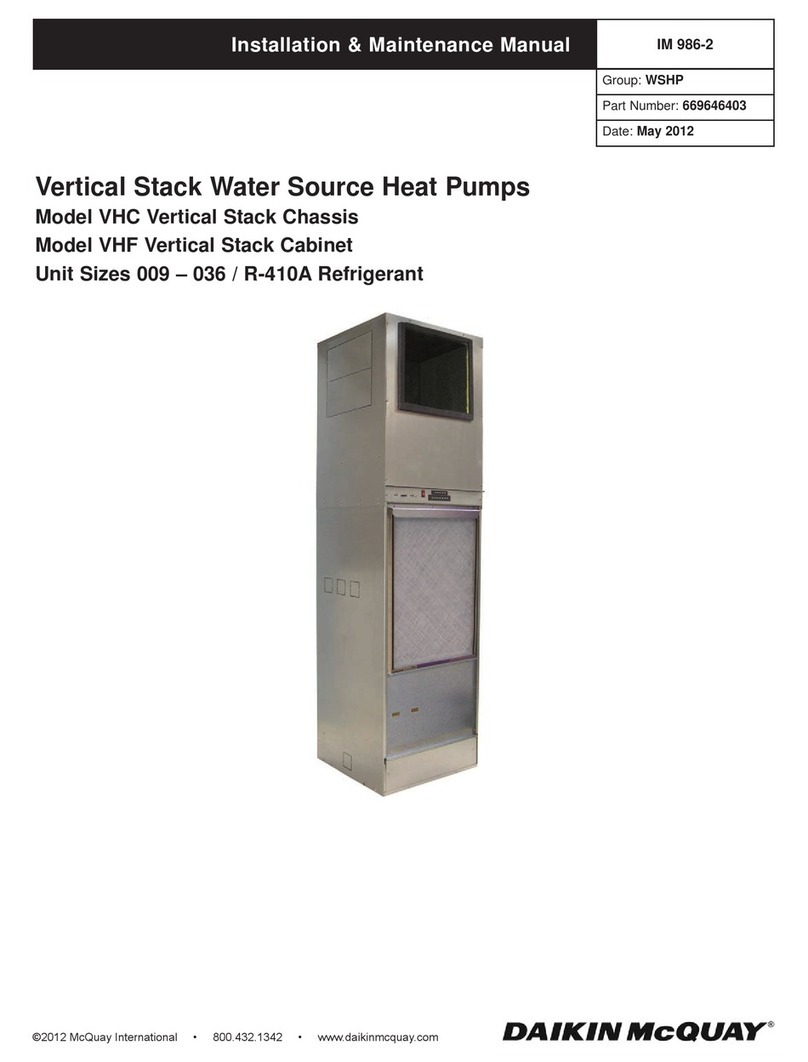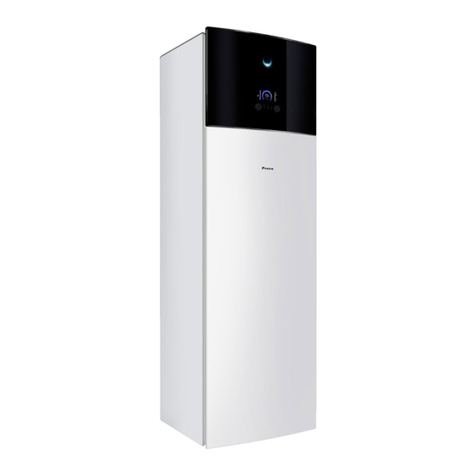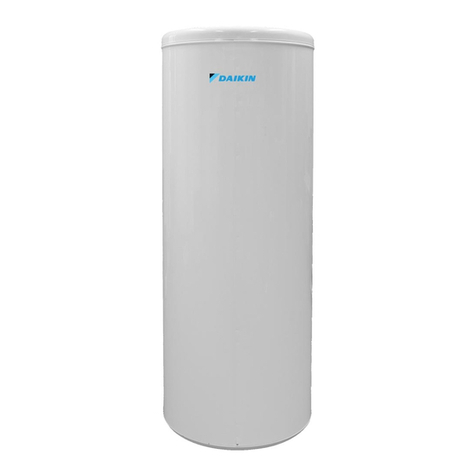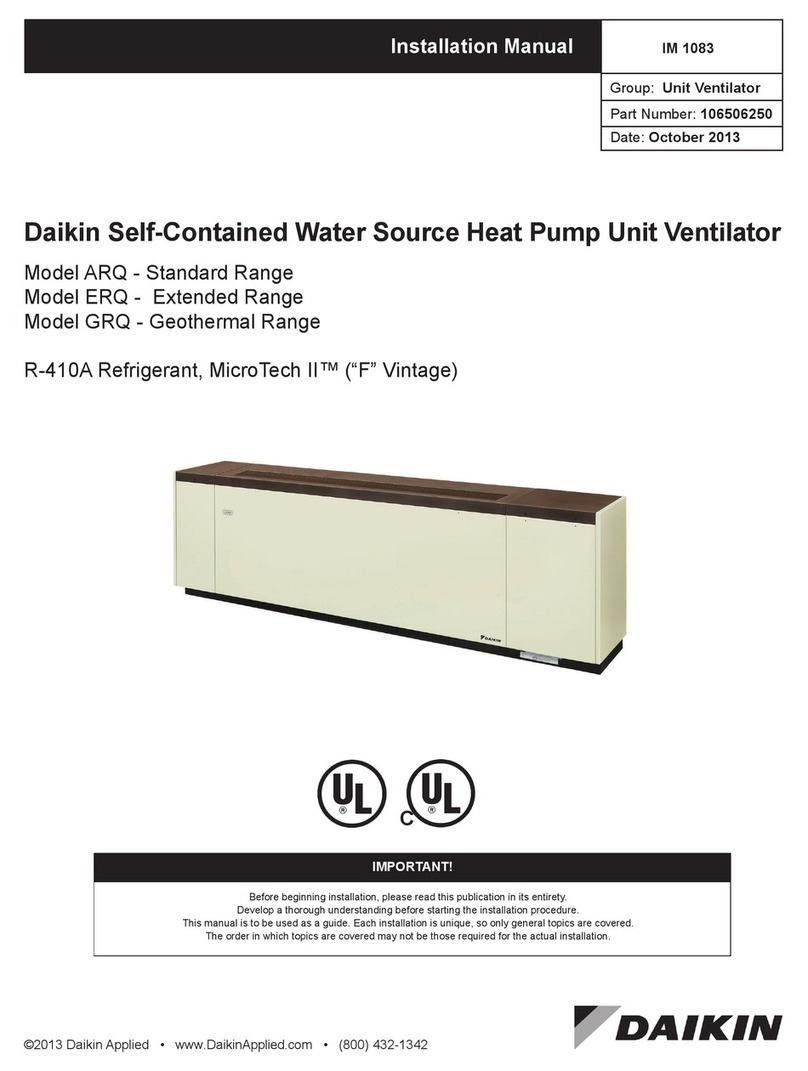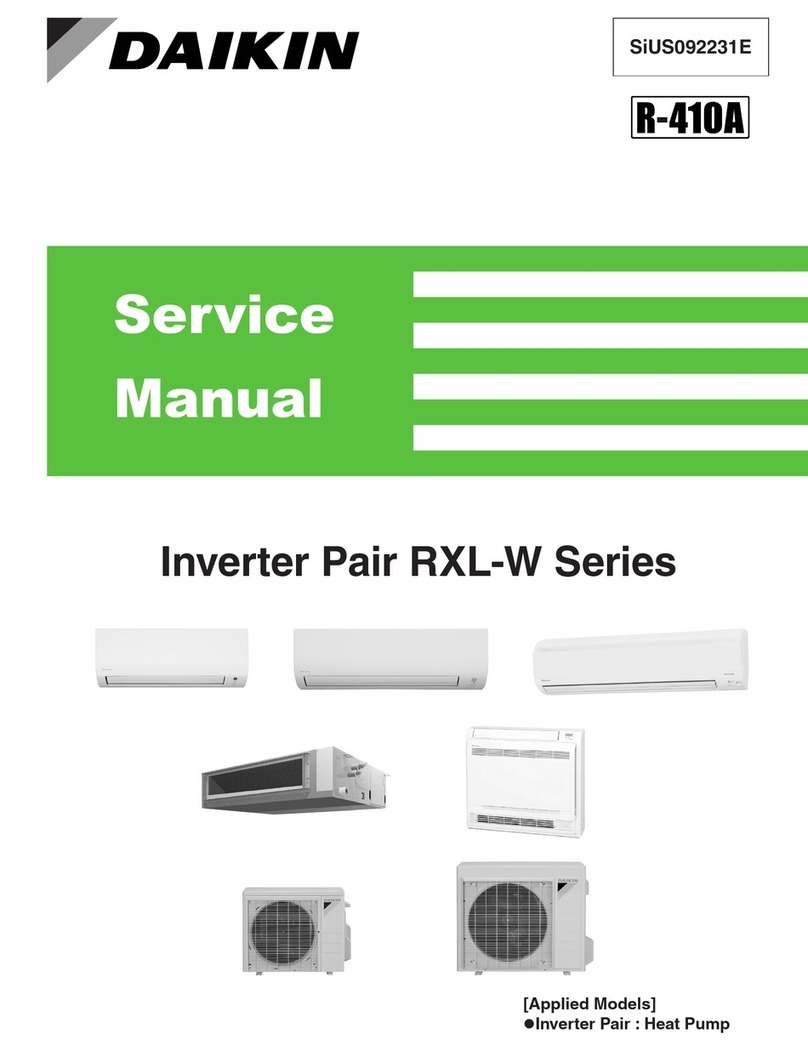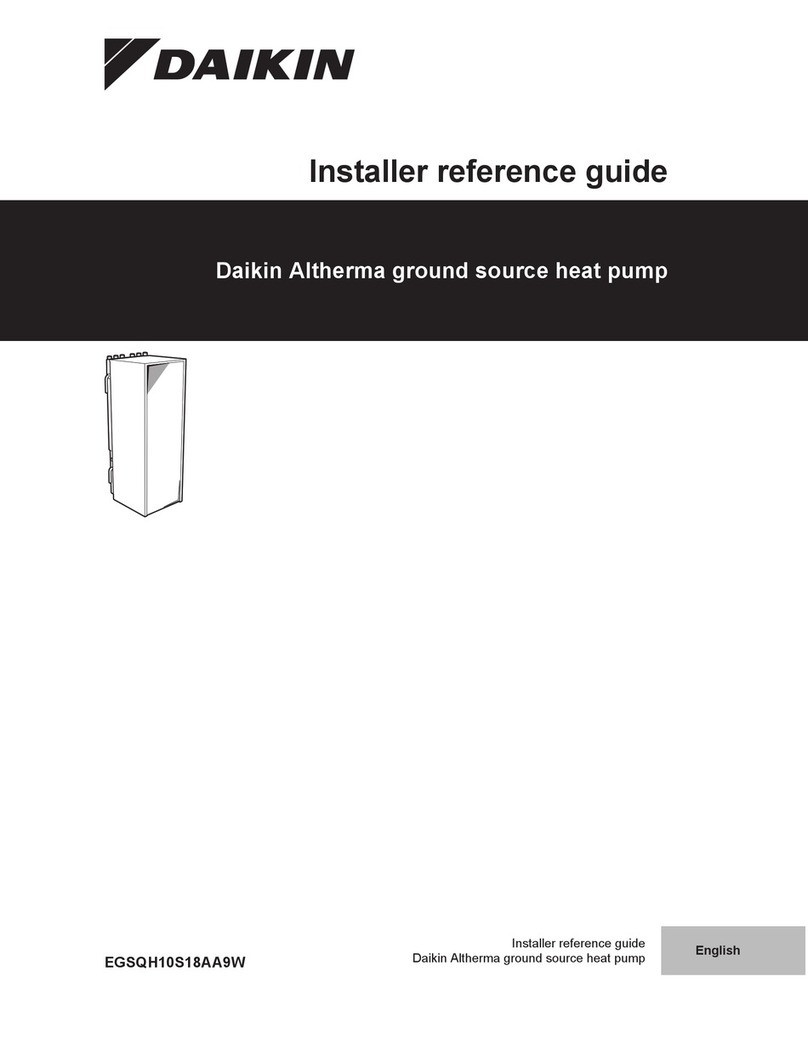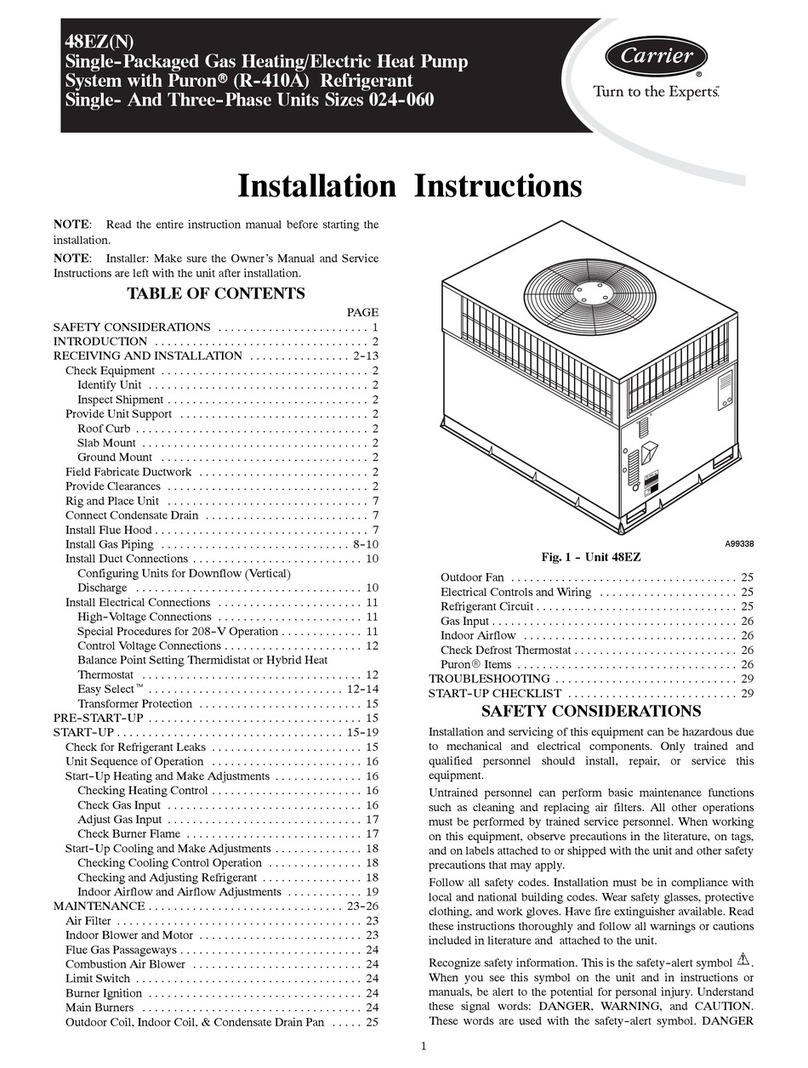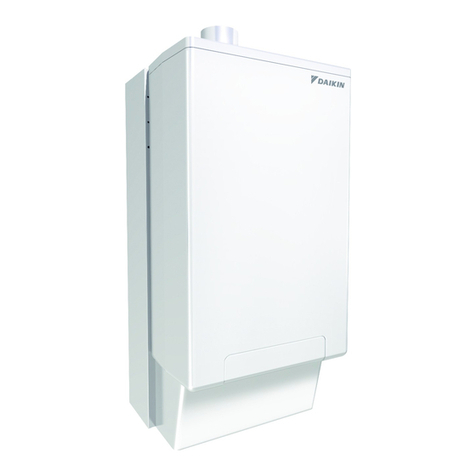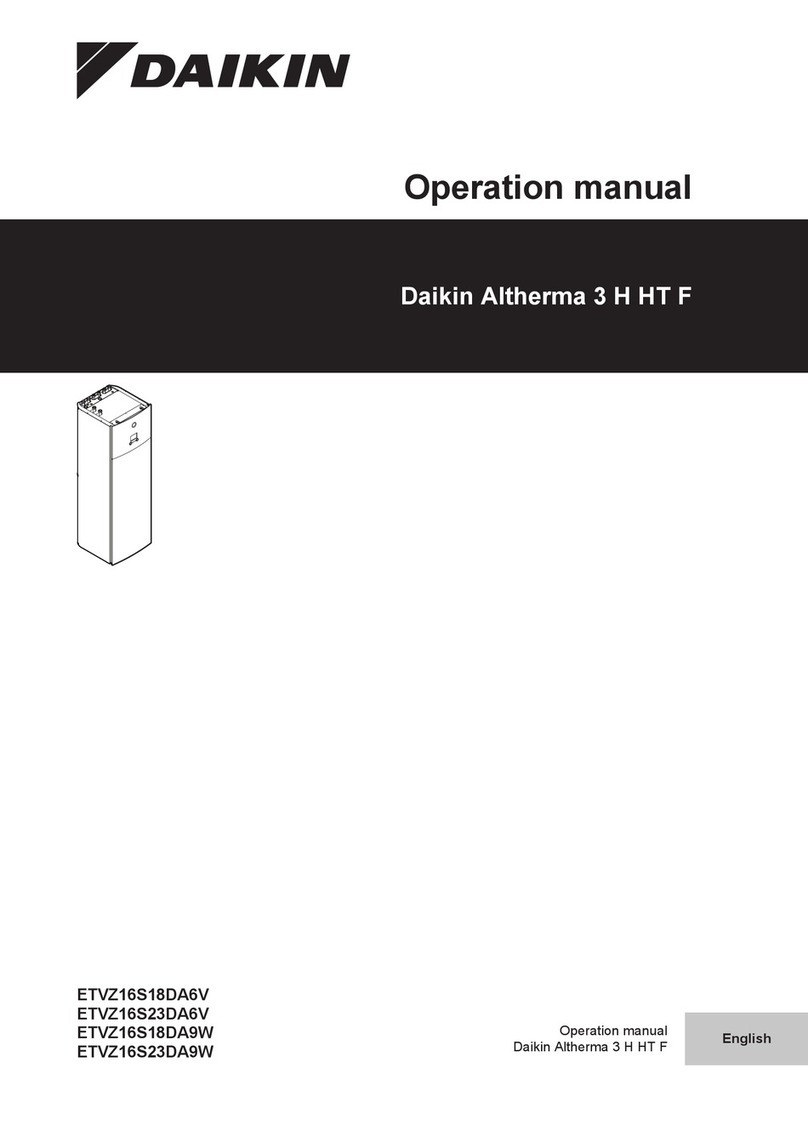
8
additional minutes and measure the hot gas discharge
Adjust the charge until the hot gas temperature equals
NOTE:
mode (outdoor temperature of 60°
NOTE:
NOTE:
This heat pump uses a Time/Temperature method for
•
•
If the defrost cycle has not terminated after ten (10)
NOTE:
TROUBLESHOOTING ANALYSIS TABLE
COMPLAINT PROBABLE CAUSE REMEDY
High Head Pressure
1. Excessive charge of refrigerant in the
system.
2. Inadequate supply of air across the
condensor coil.
3. Non-condensate gases in the system.
1. Purge or pump-down excessive charge.
2. Make certain that coil is not fouled in any way, or
that air is not re-circulating.
3. Purge these gases from the system. Recharge
Low Head Pressure
1. System low on refrigerant.
2. Compressor valve broken.
1. Charge systen until sight glass is clear of bubbles.
2. Replace compressor.
Low Suction Pressure
1. Liquid line valve closed.
2. Restricted liquid line.
3. The bulb of the thermal expansion valve
has lost its charge.
4. System low on refrigerant.
5. Dirty filters.
6. Coil frosted up.
7. Flash gas in the liquid line.
8. Quantity of air through evaporator not
adequate.
2. Replace filter-dryer.
3. Detach the bulb fron the suction line and hold in
one hand. If no liquid refrigerant goes through the
valve, replace the valve.
4. Test the unit for leaks. Add refrigerant until sight
glass is free from bubbles, after repairing leak.
5. Clean or replace filter.
6. Defrost and clean coil. Clean or replace filters.
7. Excessive liquid line drop. Check liquid line size.
8. Increase the blower speed.
High Suction Pressure
1. Expansion valve stuck open.
2. Expansion valve bulb not in contact with
suction line.
3. Suction and/or discharge valve leaking or
1. Correct valve action or replace the valve.
2. Fasten bulb securely to suction line.
3. Replace compressor.
Compressor will not
start.
1. Disconnect switch open (if equipped).
2. Blown fuse or fuse at disconnect switch (if
equipped).
3. Thermostat set too high.
4. Selector switch in "OFF" position.
5. Contactor and/or relay coils burned out.
6. Loose or open electrical connection in
either the control or power circuit.
1. Close the disconnect switch (if equipped).
2. Check the cause of failure and replace the fuse (if
equipped).
3. Adjust to lower temperature.
4. Turn selector switch knob to "Cool" position.
5. Replace contactor and/or relay.
6. Inspect and secure all electrical connections.
Solenoid does not energize
when voltage is present.
1. No voltage is present. 1. Replace the reversing valve.
Check the wiring
The valve will not shift.
2. Replace the reversing valve.
3. Replace the reversing valve.

